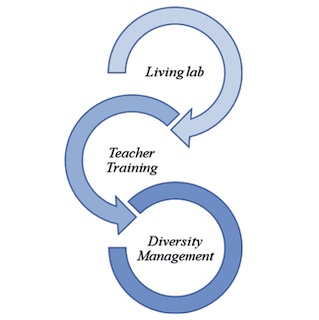GreenCompass - A self-assessment tool for fostering integration of green skills

HTML: 2
All claims expressed in this article are solely those of the authors and do not necessarily represent those of their affiliated organizations, or those of the publisher, the editors and the reviewers. Any product that may be evaluated in this article or claim that may be made by its manufacturer is not guaranteed or endorsed by the publisher.
In today's ever-evolving landscape, fostering green skills emerges as a paramount endeavour, a beacon of progress towards a green(er) future. Within this transformative journey, this paper unveils a blueprint for organizations and institutions seeking to embrace a green future. The Self-Assessment Tool, GreenCompass, emerges as a pivotal cornerstone of this research, designed to quantitatively assess the green innovation capabilities of VET organizations. This tool offers a comprehensive view of an organization's readiness and potential for fostering green skills for green innovation. The paper further unveils the insights garnered from the extensive pilot-testing of the GreenCompass across diverse geographical regions and within various types of vocational education and training institutions, validating its applicability for a broad spectrum of settings. In the last part, the paper emphasizes the creation of an environment, a nurturing environment wherein green skills can thrive. It's a conceptual framework dedicated to facilitating the growth of a sustainable and green mindset, in alignment with the evolving dynamics of the green transition. This journey underscores the significance of a comprehensive methodology, one that begins with self-assessment, evolves through empirical validation, and culminates in the establishment of an environment to nurture green innovation. Ultimately, this multifaceted approach propels organizations towards a future characterized by innovation, sustainability, and an un-wavering commitment to a greener, more eco-conscious world.
How to Cite

This work is licensed under a Creative Commons Attribution-NonCommercial 4.0 International License.
Copyright (c) 2024 The Author(s)
PAGEPress has chosen to apply the Creative Commons Attribution NonCommercial 4.0 International License (CC BY-NC 4.0) to all manuscripts to be published.

 https://doi.org/10.4081/peasa.31
https://doi.org/10.4081/peasa.31



